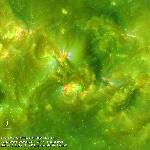Highest Rated Events (only 193 and 304 shown) All AR FE FL
Rating:
5.0 (0=lowest, 5=highest)
Num Ratings:1
Detected by halocme, Submitted at 2021-03-26T00:01:24
2021-03-19T23:00:09 --> 2021-03-20T07:00:09
This event lacked clear markers of eruption, apart from slowly formed and spreading flare ribbons or post-eruption arcades. But it was a quite big CME ( https://cdaw.gsfc.nasa.gov/movie/make_javamovie.php?img1=lasc2rdf&img2=goesx&stime=20210319_2100&etime=20210320_0700 ).

Rating:
5.0 (0=lowest, 5=highest)
Num Ratings:1
Detected by halocme, Submitted at 2021-03-22T00:03:38
2021-02-20T09:30:01 --> 2021-02-20T15:30:01
The filament erupted, producing a major CME ( https://cdaw.gsfc.nasa.gov/movie/make_javamovie.php?img1=sta_cor2rd&img2=lasc2rdf&stime=20210220_0900&etime=20210220_1700 ).

Rating:
5.0 (0=lowest, 5=highest)
Num Ratings:1
Detected by jinmeng, Submitted at 2021-03-16T23:17:06
2021-01-08T00:00:09 --> 2021-01-08T21:30:09
A nice sympathetic eruption with two quiet Sun filaments involved. The first filament starts rising around 03:00. The second one to the north shows activties around 06:00, and erupts 5 hours later at 11:00.

Rating:
5.0 (0=lowest, 5=highest)
Num Ratings:1
Detected by gchintzo, Submitted at 2018-04-13T21:10:38
2018-04-12T00:00:09 --> 2018-04-12T04:47:39
A minifilament eruption on the southeast quadrant of the solar disk (solar limb on the left). The interesting thing here is that there seems to be a shock bubble associated with this eruption.
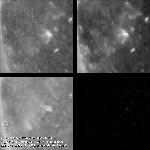
Rating:
5.0 (0=lowest, 5=highest)
Num Ratings:1
Detected by halocme, Submitted at 2018-03-02T02:20:42
2018-02-24T04:10:13 --> 2018-02-24T04:59:25
This occurred in a non-active-region, not accompanying any flaring in X-rays (the GOES background was ~A3 around this time) or a CME that could have been detected by STEREO. But it was a nice circular wave. This event may correspond to what Howard and Pizzo (2016) called a blast wave.
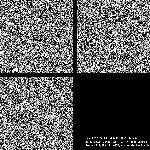
Rating:
5.0 (0=lowest, 5=highest)
Num Ratings:1
Detected by halocme, Submitted at 2017-10-19T00:54:38
2017-10-18T05:25:13 --> 2017-10-18T10:00:01
As reported earlier, there were two eruptions on the far side (~E125) around the location that used to be AR 12673. The first one produced a notable EUV wave propagating across the disk, covering the whole longitudes in the visible hemisphere. The second one was minor propagating only along the limb (clockwise).
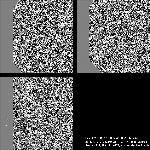
Rating:
5.0 (0=lowest, 5=highest)
Num Ratings:1
Detected by halocme, Submitted at 2017-09-15T05:54:40
2017-09-10T15:00:02 --> 2017-09-11T01:00:02
This concluded eruptive activity of AR 12673. Reconnection related features included plasmoid (flux rope) like eruption, followed by formation of a thin current sheet and supra arcade downflows (both in the main and southern systems). The cusp-like structure stands out in 94 A, indicative of high temperature.

Rating:
5.0 (0=lowest, 5=highest)
Num Ratings:1
Detected by halocme, Submitted at 2017-09-15T05:54:40
2017-09-10T15:00:02 --> 2017-09-11T01:00:02
This concluded eruptive activity of AR 12673. Reconnection related features included plasmoid (flux rope) like eruption, followed by formation of a thin current sheet and supra arcade downflows (both in the main and southern systems). The cusp-like structure stands out in 94 A, indicative of high temperature.

Rating:
5.0 (0=lowest, 5=highest)
Num Ratings:1
Detected by halocme, Submitted at 2017-09-14T07:59:54
2017-09-10T15:30:01 --> 2017-09-10T16:50:25
The flare was probably stronger than X8.2 because AR 12673 was slightly behind the limb. The coronal wave appeared to be the widest, covering the entire surface. The associated CME was super fast (3000-3500 km/s), and resulting in quick onset of a big SEP event, possibly a GLE.
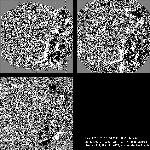
Rating:
5.0 (0=lowest, 5=highest)
Num Ratings:1
Detected by gchintzo, Submitted at 2017-09-06T22:04:31
2017-09-04T10:40:09 --> 2017-09-05T03:50:09
Delta spot AR12673 in the South hemisphere is the source of two consecutive CME eruptions (http://spaceweather.gmu.edu/seeds/mkmovie_ql.php?cme=20170904.183608.w157.v0334.p241&frame=13). Given that the second CME is a halo CME it is expected that this event would be geoeffective.
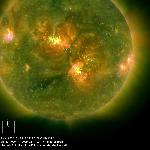
Rating:
5.0 (0=lowest, 5=highest)
Num Ratings:1
Detected by gchintzo, Submitted at 2017-08-18T20:43:53
2017-08-16T06:30:09 --> 2017-08-17T10:00:09
An observation of a long filament extending towards the solar limb. Towards the limb, where the axis of the filament closely follows the line of sight, a dark cavity is seen in the corona. The bulk of the filament erupts but the cavity stays intact until it vanishes. The cavity vanishes quickly enough to rule out the case of non-favorable orientation that leads to its invisibility, but rather heating/cooling.
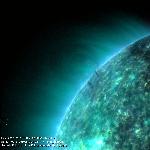
Rating:
5.0 (0=lowest, 5=highest)
Num Ratings:1
Detected by halocme, Submitted at 2016-07-18T00:49:21
2016-07-17T05:30:34 --> 2016-07-17T07:40:34
This may look like an eruption from a sigmoid region, which straddles AR 12565 and 12567. The dimming area is not particularly extended, but goes beyond the boarders of the ARs. This eruption is associated with a diffuse halo CME (see https://twitter.com/halocme/status/754822061537636353).

Rating:
5.0 (0=lowest, 5=highest)
Num Ratings:1
Detected by jinmeng, Submitted at 2016-05-10T22:22:00
2016-05-09T10:10:06 --> 2016-05-09T20:10:06
Mecury Transit
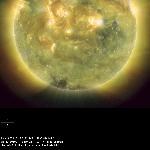
Rating:
5.0 (0=lowest, 5=highest)
Num Ratings:1
Detected by cheung, Submitted at 2016-04-15T16:12:48
2016-04-10T10:15:06 --> 2016-04-10T12:00:06
This filament eruption occurs about two hours following an eruption from AR 12529. The two are possibly sympathetic events.

Rating:
5.0 (0=lowest, 5=highest)
Num Ratings:1
Detected by cheung, Submitted at 2016-04-15T16:09:30
2016-04-10T05:00:06 --> 2016-04-10T12:00:06
This eruption is possibly due to the formation of a flux rope in the corona. There is no sign of a filament destabilization from the source region. Within two hours of this eruption there is a nearby filament eruption. This filament is originally located northwest of AR 12539. It is possibly that the two are sympathetic events.

Rating:
5.0 (0=lowest, 5=highest)
Num Ratings:1
Detected by schryver, Submitted at 2016-03-22T23:32:42
2016-03-21T23:16:06 --> 2016-03-22T02:12:06
A coronal propagating front emanates from a very compact, small bipole at one scale length from the nearby sizeable AR with a nonpotential swirl in the loops from its leading spot. The wave and reflections extend over in excess of 0.5Rsun from the site into quiet Sun.

Rating:
5.0 (0=lowest, 5=highest)
Num Ratings:1
Detected by schryver, Submitted at 2016-03-22T23:27:37
2016-03-21T12:52:06 --> 2016-03-21T23:16:06
Two successive filament eruptions in rapid succession from overlapping field configurations.

Rating:
5.0 (0=lowest, 5=highest)
Num Ratings:1
Detected by jinmeng, Submitted at 2016-02-19T21:30:21
2016-02-18T20:10:06 --> 2016-02-19T07:10:06
A large filament erupted near the east limb. Part of the filament material went back and formed a new smaller one to the west of the eruption site. Some loop activities at the east limb after the eruption.

Rating:
5.0 (0=lowest, 5=highest)
Num Ratings:1
Detected by halocme, Submitted at 2016-02-13T06:11:36
2016-02-11T20:05:22 --> 2016-02-11T21:31:22
The eruption occurred in AR 12497, associated with a long-duration C8.9 flare. No clear cool filament was seen, but from the way the flare ribbon and post-eruption arcade formed, a somewhat curved polarity inversion line was involved. Coronal dimming was not very extensive, but a partial halo CME was observed by LASCO.
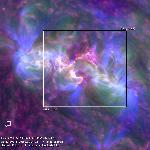
Rating:
5.0 (0=lowest, 5=highest)
Num Ratings:1
Detected by jinmeng, Submitted at 2016-02-08T19:50:45
2016-02-05T17:40:06 --> 2016-02-06T00:00:06
Sympathetic filament eruptions(?) The first eruption is between AR 12491 and AR 12494, followed by the second one at SW of AR 12494.
